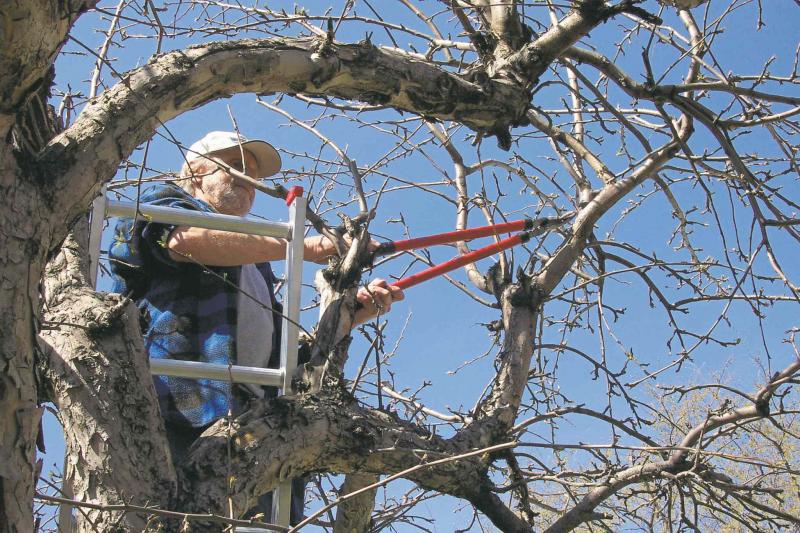Recently, I assisted a group of community volunteers who wanted to know how to properly prune orchard fruit trees consisting of varieties of apples and plums. We are currently in a short period where the window for early spring pruning is an opportunity to do some pruning of trees and shrubs. Pruning of these woody plants can be done while their buds are still dormant. However, this season is very short because as the weather warms up and the ground starts to thaw, it will not be long before the trees and shrubs will open up their winter buds. The opening of the buds is popularly called the "budding" season. The buds have been on the trees and shrubs since the middle of summer of last year. As soon as the weather warms up, pruning is not advisable, especially in fruit trees, where they are highly susceptible to potentially lethal tree diseases such as fire blight and apple scab. The spores of these diseases will become active with warmer weather.
Plan on sharpening your pruning tools as you are getting ready to prune. If you are not familiar with how to sharpen your tools properly, there is always the Internet to assist you. Ideally, you will need to know how to prune these trees properly. I will be holding a course on the care and proper pruning of fruit trees on April 14. I will demonstrate the techniques of proper sharpening of pruning tools. You will need to call the Louis Riel School Division's continuing education department to register for this course. This can be done online or by phone (204-237-8130 ). There will be other care and pruning courses for woody shrubs and coniferous evergreen trees later in April as well.
There is an easy-to-learn strategy in pruning a fruit tree. Diagrams are provided to students on how to do the pruning properly. Start by removing broken and dead twigs and branches. Always prune twigs and branches at their point of origin on a larger branch or on the trunk. Never leave a short stub. Remove all sucker shoots arising from the base of the tree. Never remove more than a quarter to a third of the branches especially if you have never pruned the fruit tree before. Depending on the age of your tree I recommend that you thin out crowded branches especially in the inner core of the crown. Fruit trees need light to penetrate the crown in order to develop fruit that will stay on the tree. This also helps pollinating insects with the fertilization process. I never recommend pruning a fruit tree that has not been pruned before once spring has arrived and the buds are opening up.
Michael Allen M.Sc.F., RPF (ret.) is a consulting urban forester, tree diagnostician and certified arborist. He owns Viburnum Tree Experts. He can be reached at
204-831-6503 or 204-223-7709
viburnumtrees@shaw.ca




